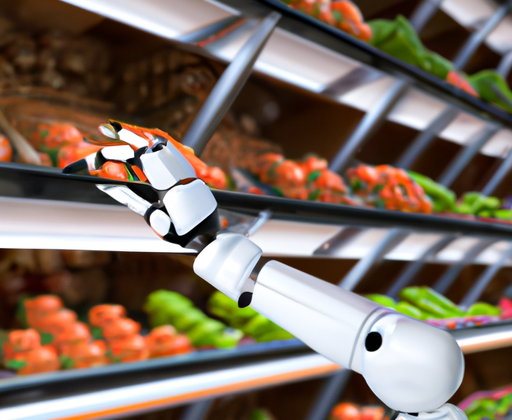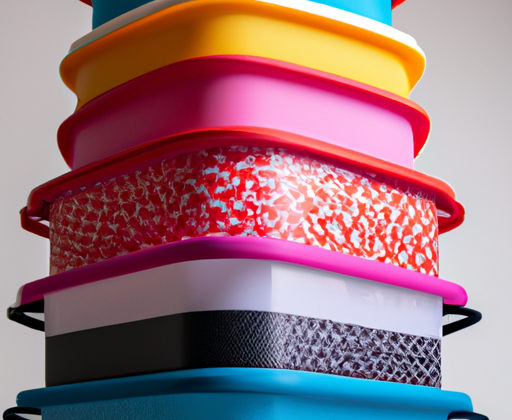Hey, let’s learn about Eco-Friendly Food Packaging Solutions!
Isn’t it great that we can now have food that is not only delicious but also sustainable at the same time? In this blog post, we will talk about eco-friendly food packaging solutions that are a win-win for businesses and our environment. You might be wondering what eco-friendly packaging is. Let me tell you that it’s a type of packaging made from biodegradable materials that have a low environmental impact.
Benefits of Eco-Friendly Food Packaging Solutions: Make a Difference with Every Bite
Let’s be real – choosing eco-friendly food packaging solutions isn’t just a trendy gimmick. It’s a conscious decision to support our planet and preserve its natural resources. When it comes to benefits, these sustainable options offer more than just the peace of mind that you’re doing the right thing.
Firstly, opting for eco-friendly packaging can significantly reduce the environmental impact of your business. Instead of using plastic packaging that can take hundreds of years to decompose, compostable packaging made from recycled materials or plant-based sources can easily break down and reduce the strain on our landfills.
Not only is it a responsible choice, but it can also offer cost savings in the long run. Due to the increased demand for eco-friendly options, reusable and recyclable packaging solutions have become more accessible and affordable. Additionally, since these materials are biodegradable, businesses can avoid hefty fines for contributing to waste and pollution.
As an added bonus, sustainable food packaging can also increase brand awareness. Eco-friendly packaging is an excellent marketing tool that can attract environmentally conscious customers who appreciate businesses that take a proactive approach to sustainability. By promoting your brand as an environmentally responsible business, you’re not only doing the right thing but also gaining a competitive advantage in the market.

If you’re not sure where to begin, there are several types of eco-friendly food packaging solutions available. Compostable packaging made from natural materials such as cornstarch and bamboo can easily break down over time. Reusable or recyclable containers can be used multiple times and reduce waste. Plant-based packaging made from renewable resources can replace traditional plastic packaging and reduce the amount of waste that ends up in the environment.
Despite the many benefits, there are still challenges when it comes to adopting eco-friendly food packaging solutions. However, businesses must understand that this is not a solution that occurs overnight. It takes time to transition, and doing so requires consistent effort and commitment. But opting for a sustainable approach is a small step towards preserving our planet and ensuring a lasting future.
At Baked Occasions, we pride ourselves on prioritizing the use of eco-friendly food packaging solutions. It’s our commitment to the planet and our customers to make a difference with every bite. We hope this encourages you to take the first step towards adopting sustainable packaging solutions and join us in preserving the future.
Types of Eco-Friendly Food Packaging Solutions
Now, let’s talk about the different types of eco-friendly food packaging solutions. There are three main categories of packaging: compostable packaging, reusable/recyclable packaging, and plant-based packaging. Firstly, compostable packaging is made from natural materials that can break down into organic compounds, such as corn starch, cellulose, or sugarcane fiber. These materials can decompose into soil in only a few months, leaving no harmful waste behind. This type of packaging is ideal for food service providers who want to minimize their carbon footprint. Moving on, reusable/recyclable packaging is made from materials that can be used multiple times, such as glass, metal, and some plastics. These materials require a bit of maintenance, but they can last for years and minimize the amount of waste we produce. Recycling is also a great way to reduce the negative impact on the environment. Recycling turns waste into new materials and products, reducing the need to extract new materials from the earth. Lastly, plant-based packaging is made from agricultural waste, such as pineapple or cassava leaves, or from plants, such as bamboo or palm. These renewable resources are biodegradable and can be composted within a few weeks. Plant-based packaging is a great alternative to traditional single-use plastic packaging. Choosing one of these eco-friendly options will provide an excellent alternative to the wasteful and environmentally damaging packaging that we have become accustomed to.
Challenges of Eco-Friendly Food Packaging Solutions
Let me be straight with you, folks – making the switch to eco-friendly food packaging solutions isn’t all sunshine and rainbows. I’ve encountered a number of challenges during my journey towards using green packaging, and I’m here to share them with you.
1. Limited Availability
One of the biggest challenges I’ve faced is finding eco-friendly packaging options that fit my specific needs. While there are plenty of green packaging solutions out there, they may not be readily available in your area, or they might not work for the types of products you’re selling. It’s important to do your research and find the best eco-friendly packaging options for your business.
2. Higher Cost
Another challenge that I’ve run into is the higher cost of eco-friendly packaging options. While the long-term benefits (such as reduced environmental impact) may outweigh the initial costs, it can be difficult for small businesses to afford the switch right away. That being said, I believe it’s worth the investment in the long run.
3. Lack of Consumer Awareness
While more and more people are becoming aware of the importance of eco-friendly products, there are still many consumers who aren’t willing to pay extra for green packaging. This can be a challenge for businesses trying to make the switch, as they may not see an immediate return on investment if consumers aren’t willing to pay extra for eco-friendly packaging.
4. Quality Control
Switching to eco-friendly packaging can sometimes mean sacrificing quality. Many green packaging options are still in the early stages of development, and may not hold up as well as traditional packaging materials. It’s important to test different eco-friendly packaging options to ensure they work for your products before making the switch.
5. Regulations and Certifications
Finally, navigating the world of eco-friendly packaging regulations and certifications can be a challenge in itself. Different countries and regions have different standards, and it can be overwhelming to sort through them all. It’s important to do your research and make sure you’re using packaging materials that meet the appropriate standards and certifications.
Despite these challenges, I firmly believe that making the switch to eco-friendly food packaging solutions is worth it. By reducing our environmental impact and showing our customers we care, we can create a better world for ourselves and future generations.
Revolutionize Your Food Packaging with Eco-Friendly Solutions Today
After delving into the world of eco-friendly food packaging solutions, it’s clear that incorporating such solutions into your business model is a no-brainer. Not only do they help reduce your environmental impact, but they also lead to cost savings and increased brand awareness.
There are various types of eco-friendly food packaging solutions available, each with their unique set of advantages and disadvantages. Compostable packaging is a great option as it breaks down quickly and turns into compost material that can be used to fertilize plants. Reusable/recyclable packaging is another popular solution, allowing customers to reuse or recycle the packaging material. Plant-based packaging is also a fantastic option, using materials like bamboo, cornstarch, and wheat to reduce the use of fossil fuels and decrease carbon emissions.
However, in implementing these solutions, one might face challenges such as finding reliable suppliers, managing costs, and ensuring that the packaging material meets industry standards while also being environmentally friendly. It’s essential to do your research and seek expert advice before selecting an eco-friendly food packaging solution that works best for your business.
In conclusion, eco-friendly food packaging solutions represent the future of food packaging. Incorporating them into your business model will not only help reduce your carbon footprint but can also lead to financial benefits and greater brand recognition. So, why not make the switch and revolutionize your packaging game today?

